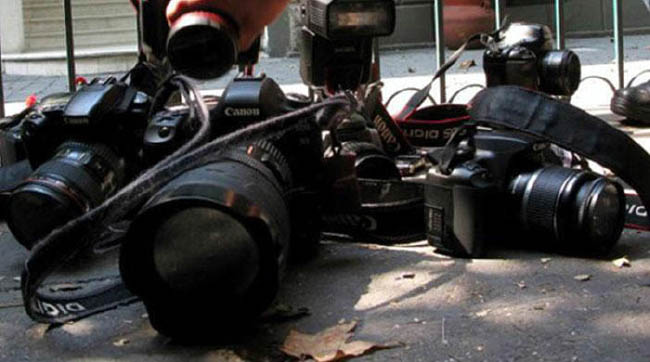War and violence hamper progress in many fields in Afghanistan including the media. The media staffs, alike other citizens, suffer from violence more than anything else. The ground of violence against Afghan journalists seems to be different from other countries. Perhaps violence against journalists will be exercised by the state in other countries, which will be prosecuted. However, violence against Afghan journalists is beyond prosecution.
In Afghanistan, both the state and journalists suffer from war and suicide attacks and social violence, which pose threat to all Afghans. Journalists bear the brunt of violence for working in the field.
It goes without saying that the state is responsible to protect the rights of all citizens, including the journalists, in any conditions. The responsibility of security and judicial institutions are far significant.
Ill-fatedly, only few cases of violence against journalists, out of hundreds, have been judged. In Afghanistan’s judicial institution or ministry of Information and Culture, there is not a single database to provide the cases of violence against journalists or offer them to the media. So, there is no source of information about violence against journalists and reports collected by security institutions are really disorganized and different. There is not a certain statistics for media about the investigation of violence against journalists. According to reports released by the representatives of Media and Journalists Federation in joint committee of journalist safety, 421 cases of violence took place against journalists which was sent to security organization and 13 of which were sent to Foreign Ministry by the federation without receiving answer. In short, the state could send a convincing answer neither to journalists nor to people in this regard.
Journalists Safety Committee decided to establish a commission with the combination of deputy chief of Interior Ministry, representatives of the Security Council, the General Directorate of National Security, Media and Journalists Federation and Deputy head of the Publication dapartment of Ministry of Information and Culture so as to differentiate the cases of violence against journalists and sent them to Attorney General and also share them to people through the media. But there is no result despite the passing of two months and half.
Based on a report released by the Ministry of Culture and Information, about 101 cases of violence against journalists have been registered last year. Out of this number, 13 were the cases of death and the others included beatings, threats and injuries. From 101, only 9 cases have been judged by the Attorney General and others are said to be under judicial investigation.
Investigation of violence against journalists did not meet the expectations. A number of last year cases have not been investigated yet and this trend continues. Despite this fact, Afghan media has fulfilled their duties in reporting without fear. It comes as journalists and media are not able to continue their activities under the Taliban dominated areas. Likewise, a number of governors and local officials do not respect the independence of journalists in some provinces.
In the latest ranking of press freedom in the world, Afghanistan has retained 120th position, which is considered a positive outcome. However, there is much for the government to do so as to prevent violence against journalists.
Last month, Afghan government released its achievements vis-à-vis protection of freedom of expression and supporting media, while a journalist was not allowed to ask question in the last President’s press conference. Based on this report, the presidential office’s outcomes include: establishing a law of monitoring access to information; asking the UN to introduce a special envoy to address the journalists’ problems; providing procedures for journalists safety; investigating the cases of violence against journalists; sending a formal note to security agencies for developing clear procedures regarding security officers’ behavior with journalists and including this issue in the educational texts of security forces; and reducing the cost of registering private media.
But the investigation of violence against journalists has not been mentioned explicitly. It has been mentioned implicitly that the President has issued commands to ensure the journalists’ safety and their access to information and to investigate the case of violence against them.
One of the government’s significant outcomes in upholding the journalists’ rights is the establishment of joint committee of journalists’ safety, which has been noteworthy for national and international institutions.
In their recent reports, reporters without borders have appreciated the joint committee of journalists’ safety and said that despite great concerns, Afghanistan was one of those rare countries which had established the joint committee for journalists’ safety. This committee, in which government officials and journalists’ representatives are present, had been established for supporting the media and journalists. They added that such measurements had ensured the Afghanistan’s constancy in universal ranking.
It is hoped that Afghan government will adopt effective mechanism for safeguarding the journalist’s rights and protecting its years of achievements.
Home » Opinion » Government and Cases of Violence against Journalists
Government and Cases of Violence against Journalists
| Syed Asif Husaini

